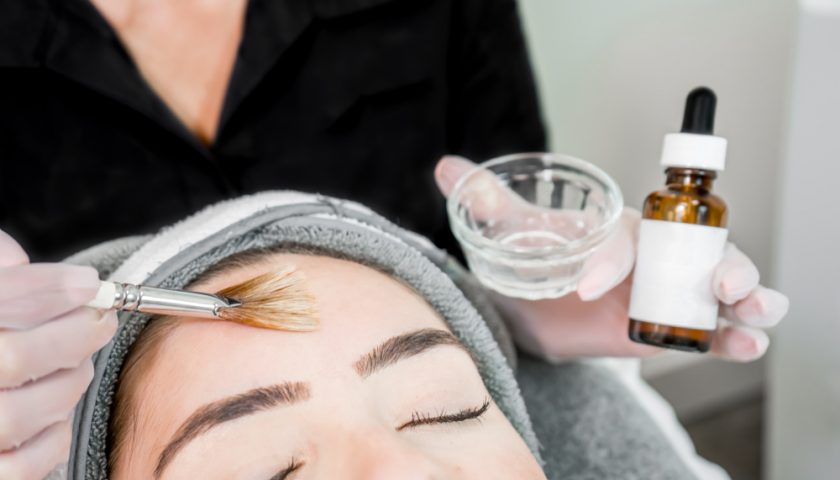Skincare can be difficult to maintain. There always appears to be a new product to try, an ingredient to learn about, or a formulation to attempt that will blow your mind. Take, for example, mandelic acid, which has been popping up on the labels of skincare products all over the world. Should you, however, be concerned?
Here’re questions to ponder:
Have you ever been hesitant to dabble in the world of chemical exfoliants? Or maybe you tried them and found them to be too harsh for your skin?
And now you’re looking for a gentle AHA… Say HELLO to Mandelic Acid!
Continue reading to learn more about mandelic acid and how it might help your skin.
Table of Contents
What Exactly is Mandelic Acid?
Mandelic acid is an AHA that is used in skin care products such as chemical peels and exfoliants. Because mandelic acid is described as a gentle AHA by many cosmetic brands, it may be appropriate for persons with sensitive skin or those who find other chemical exfoliants too harsh for their skin.
Mandelic acid is a big molecule, almost twice the size of glycolic acid, when compared to other AHAs. It is likewise considerably slower to penetrate the skin resulting in its delayed absorption which makes it less irritating to the skin than other AHAs.
Mandelic Acid Serum Benefits for Skin
Mandelic acid is beneficial to the skin in a variety of ways. These include:
Gentle on The Skin
When compared to other AHAs, mandelic acid has the advantage of being gentler on the skin. As a result, it’s a great option for folks with sensitive skin.
Accelerates Cell Turnover
Mandelic acid promotes cell turnover and works as an exfoliant to eliminate dead skin cells. As a result, certain chemical peels contain mandelic acid.
Promotes Collagen Production
According to the top Aesthetic Physician in Islamabad, Dr. Samina “Mandelic acid also improves the appearance of skin by encouraging the creation of collagen, the major protein present in skin and connective tissue.”
The effects of mandelic acid vary from person to person, however after a few weeks, some people have noticed a shift in their complexion and look.
Reduces Wrinkles and Fine Lines Appearance
Mandelic skin removes damaged and older skin cells during chemical exfoliation and replaces them with fresh, firmer skin cells. It may improve the look of wrinkles and fine lines by making the skin tighter and more elastic.
You can also learn about botox injection to get rid of wrinkles.
Helps Fight Acne
Mandelic acid in skin care products helps to regulate sebum production, clear pores, and reduce inflammation. Acne outbreaks may be reduced as a result of this.
In a recent study, a chemical peel containing 45 percent mandelic acid was found to be as efficient as a chemical peel containing 30 percent salicylic acid in treating mild to moderate acne. Adding more, mandelic acid may offer an advantage over salicylic acid in treating inflammatory acne and it may also have fewer side effects.
Mandelic Acid Reduces Hyperpigmentation
Because of its exfoliating capabilities and increased cell turnover, the acid helps to minimise the appearance of dark stains and sun damage fading dark spots aka hyperpigmentation.

How to Use Mandelic Acid?
Mandelic acid is found in a variety of skin care treatments, ranging from face cleansers to chemical peels. Depending on the product, it’s also available in various concentrations.
In general, facial mandelic acid serums and cleansers can be used on a daily basis. On the other hand, more potent products, such as peels, should only be used once or twice a week. Allowing the peel to stay for a few minutes before washing it off is recommended.
Because AHAs can make the skin more sensitive to light, it is better to include mandelic acid in the evening skin care routine. After cleansing and before moisturising, you can use it.
Precautions of Using Mandelic Acid
All alpha hydroxy acids have the potential to irritate your skin. When using mandelic acid, take cautions. These include:
Begin slowly. When using mandelic acid for the first time, look for products with a low concentration. Always do a patch test before using to make sure it doesn’t irritate your skin.
Use it sparingly. Initially, minimising the use of any alpha hydroxy acid is advisable. Begin by using it every few days and then increase to everyday use.
Product rotation is important. If you use mandelic acid with other alpha hydroxy acids or retinol products, be cautious. Combining them can cause irritation or dryness.
Apply sunscreen to your skin. Sun sensitivity can be caused by using mandelic acid serum or peels. Wear sunscreen, stay in the shade, or wear protective clothes to reduce your sun exposure.
Side Effects of Mandelic Acid
Mandelic acid is safe for some people, however you should stop using it if you develop any form of following skin conditions:
- Irritation
- Redness
- Swelling
- Itching
It’s also possible that you develop skin irritation after a few days or weeks of use. This may be because of overusing mandelic acid. If that is the case, reduce the amount of times you use mandelic acid-containing products per day to observe whether your skin gets better.
The Takeaway!
A steady, good skin care programme is essential whether you’re seeking to get rid of acne or improve skin texture and hyperpigmented spots.
Mandelic acid has the potential to completely alter your skin in as little as two weeks. It’s a good option for sensitive skin because it’s less irritating than other AHAs and has very minor negative effects. It’s a good idea to consult a dermatologist before employing any form of chemical peel. To get advice on which products to use and how to utilise them effectively for your skin type, you can consult with the best dermatologists near you via Healthwire.pk.
